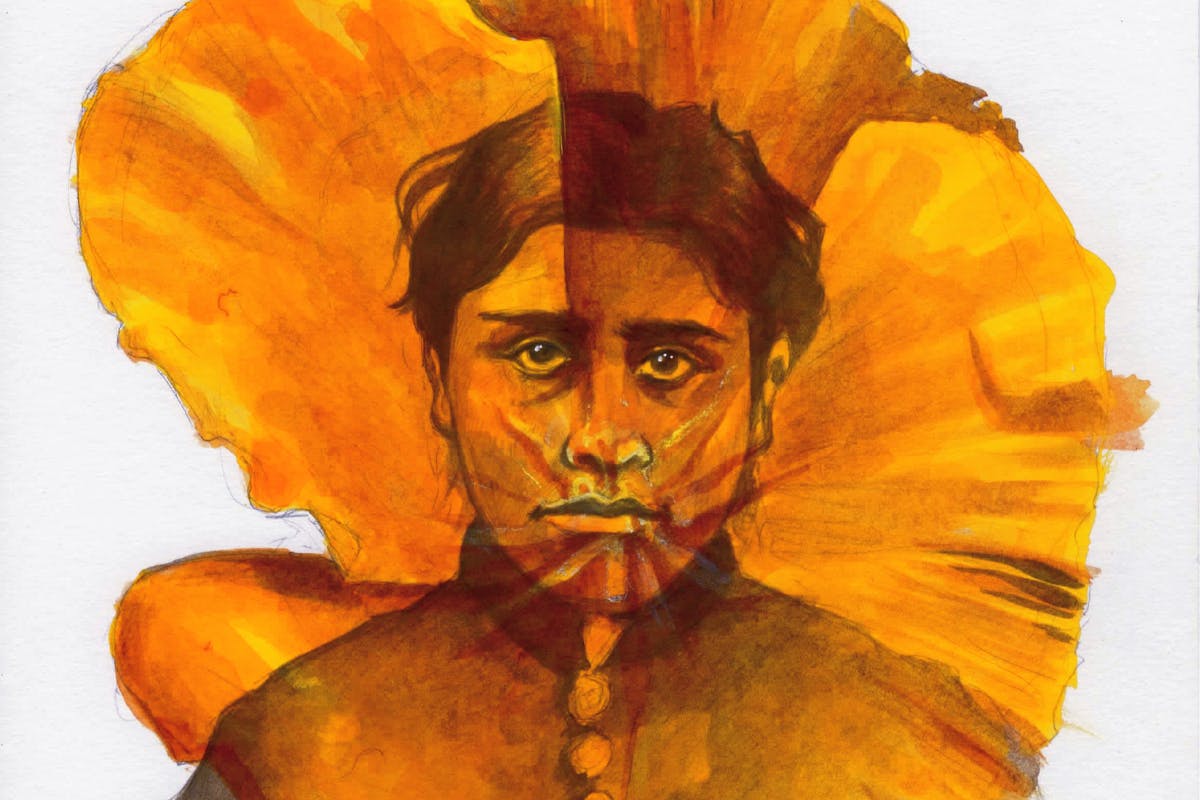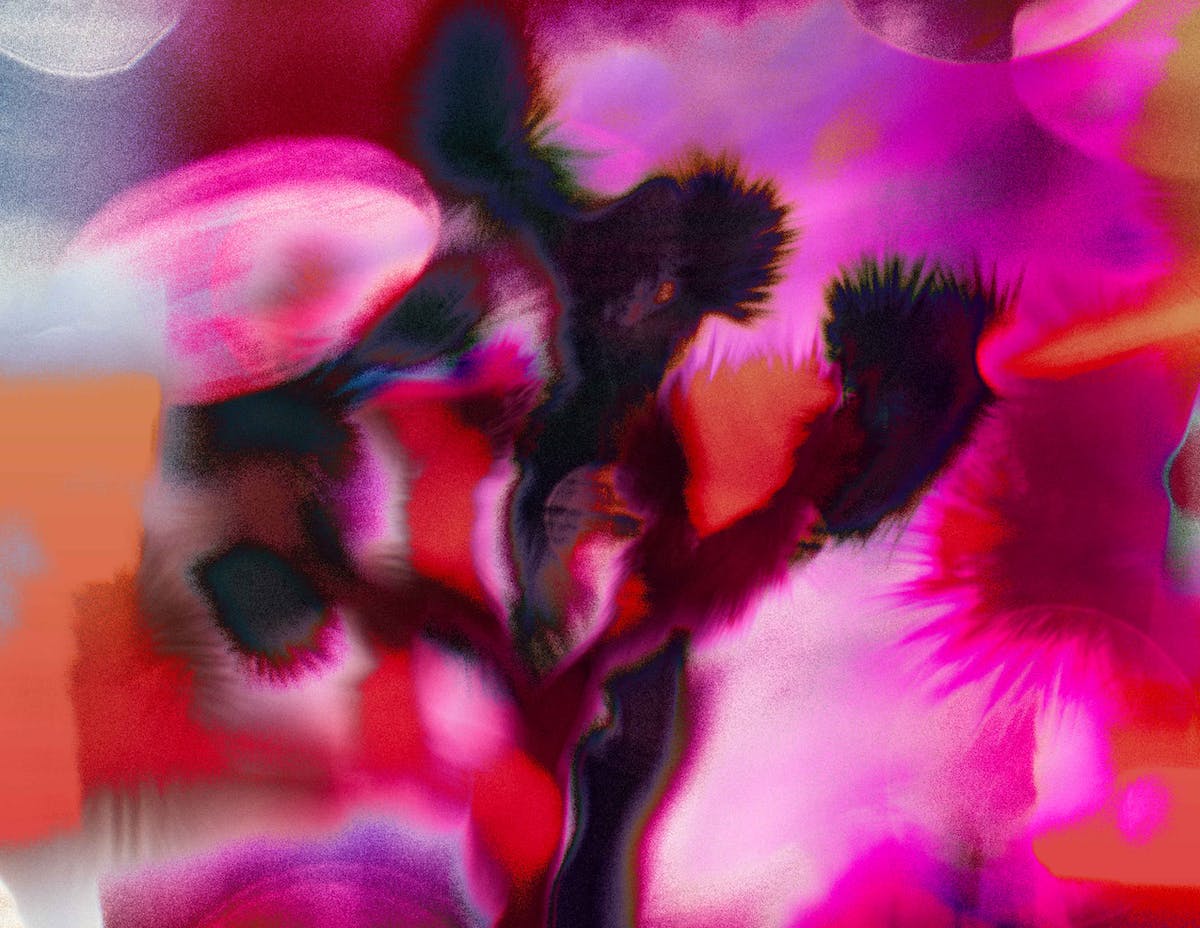Australian Aboriginal screen-printed textiles on show at the Fowler

The Fowler Museum exhibition Aboriginal Screen-Printed Textiles from Australia’s Top End invites us to explore more than 70 distinctive, screen-printed textiles made by contemporary artists at five Aboriginal-owned art centers across northern Australia. These textiles combine traditional cultural knowledge with contemporary production techniques to produce dazzling, unique fabrics. Their bold colors and striking patterns have inspired interior design, furnishings, and fashion apparel.
Joanna Barrkman, Senior Curator of Southeast Asian and Pacific Arts at the Fowler Museum, joins the UCLA Arts podcast Works In Progress to share stories about the artists and inspirations behind these textiles, on view at the Fowler through July 10.
Barrkman says what she loves most about these textiles is their beauty and the layers of cultural knowledge woven into them.
“They're so extraordinarily bold and colorful, yet there's so much detail and information that's contained within the textiles,” Barrkman said. "And ultimately, they're very beautiful. They're stunning. They're eye-catching and they really stop you in your tracks."
The work was produced by 45 artists from five Aboriginal-owned and operated art centers – - Tiwi Design; Jilamara Arts and Crafts Association; Injalak Arts and Crafts Aboriginal Corporation; Bábbarra Women’s Centre; and Merrepen Arts, Culture and Language Corporation – representing different environments as well as different cultural and linguistic groups. And there’s a noticeable difference in the styles of textiles produced at each center.
The centers are scattered across the "top end" of Australia, a colloquial term that refers to the very north of Australia’s Northern Territory, which “has the smallest population in Australia, but we have the highest population of Aboriginal people living on traditional lands,” Barrkman said.
Some of the artists live in an area called Arnhem Land, named by the Dutch explorers that visited Australia in the late 1600s. It's home to Kakadu National Park, an enormous nature reserve and world heritage site. The region contains sandstone escarpments that are harsh, dry climates during the dry season, as well as beautiful floodplains that are home to migratory birds and water lilies in the wet season. The park also has caves that include ancient rock art, with symbols that are included in the textiles.
The textiles use imagery that reflects the native flora and fauna of northern Australia, as well as creation stories and cultural symbols of Aboriginal peoples. There are pythons, crocodiles, long-necked turtles, and other creatures. One print from Injalak shows Eingana, a creator goddess known as the "dreamtime snake" who is the mother of all water animals and humans. She's drawn on rock art with 15 dillybags, woven conical baskets with straps that are used for hunting and gathering. It's believed that each of those dillybags carried one of the 15 languages that exist across Arnhem Land.
The art centers highlighted in the Fowler exhibition have been producing screen-printed textiles for 30 to 50 years. While artists from these centers have also become known for as painters, fiber artists, and sculptors, “it's actually the textiles that were the foundational creative practice that helped establish these centers,” Barrkman said.
Barrkman spent time at each of the art centers, getting to know the artists and observing their processes. The Fowler commissioned textiles and acquired over 50 textiles for its collection, making it the largest collection of Aboriginal screen-printed textiles outside of Australia. Barrkman invited the artists to gather at Charles Darwin University in Darwin, where they spent two days selecting which textiles would go in the exhibition, how they would be displayed, and writing some of the interpretive material for the exhibition.
The artists also worked with Barrkman to create short videos that elucidated the processes by which the textiles were produced, and the cultural practices that they were used in. The videos were filmed “on country,” on their traditional lands that they own. Barrkman hopes to bring some of the artists to Los Angeles to visit the exhibition before it closes on July 10 and celebrate their work.
In the last decade or so, Aboriginal screen-printed textiles have gained popularity in Australia, inspiring fashion, interior design, soft furnishings and more. The annual Darwin Aboriginal Art Fair brings together over 70 art centers for a major fashion event called "Country to Couture” and a national Indigenous fashion awards ceremony.
"In a way, the textiles serve as ambassadors or representations of their cultural identity,” Barrkman said. Some of these cultural groups only have a few hundred or thousand members that still speak the traditional language and follow cultural practices.
“It's incredibly powerful for them, sending these images out into the world, images that they have cultural ownership over, and reminding people that they continue to thrive and survive, that they continue to innovate, and that they're very much a part of the modern contemporary world, as well as having a very deep history and deep connection to land."

